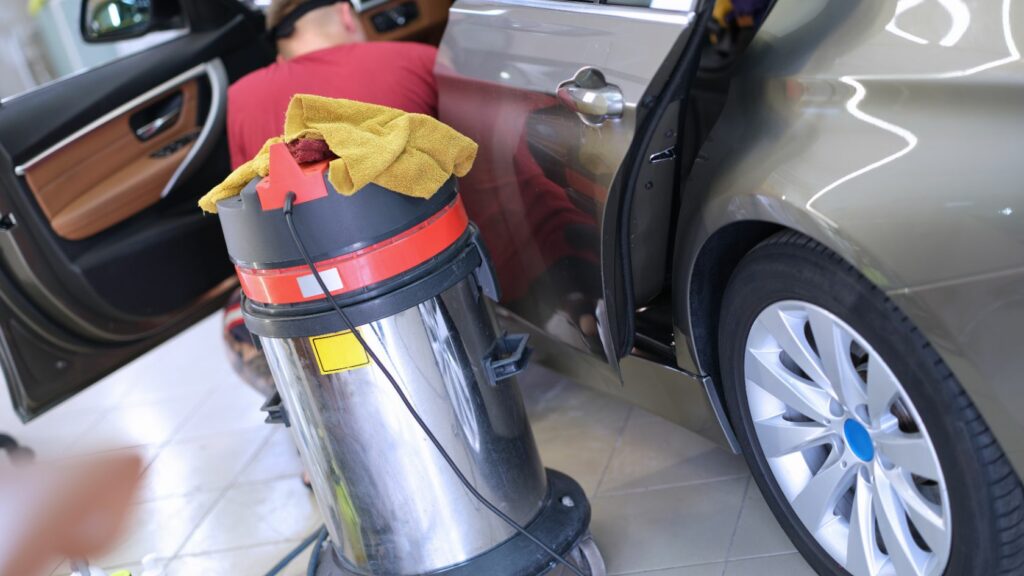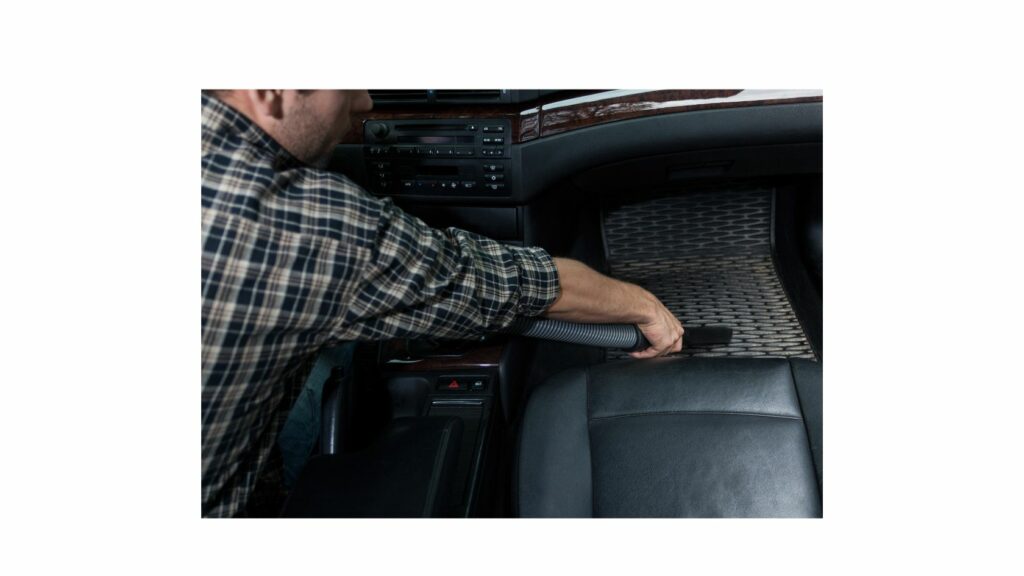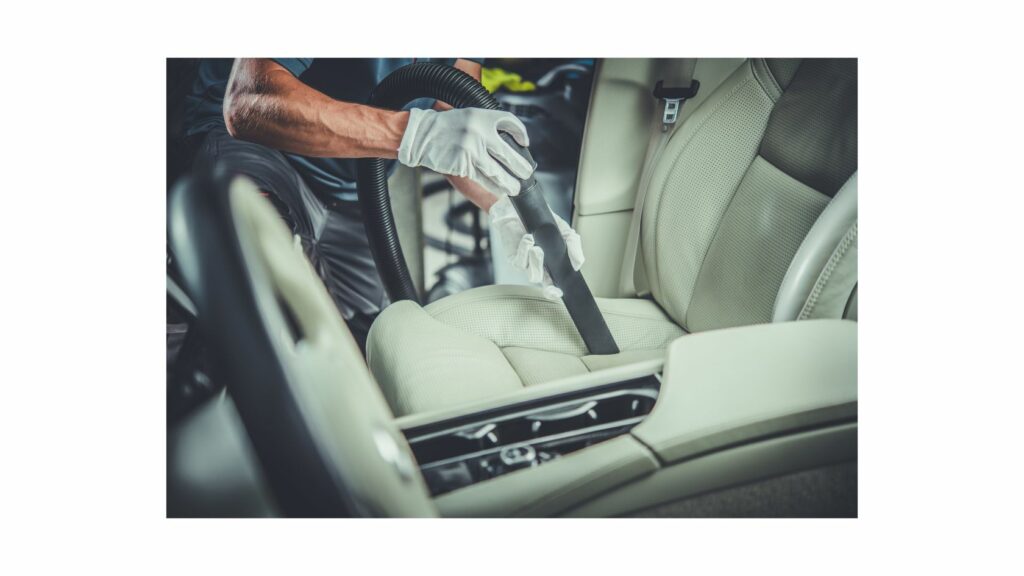
A vacuum cleaner is handy for maintaining clean and tidy car interiors. While anybody can use this equipment for cleaning, it’s crucial to prioritize safety while operating to avoid potential hazards.
Whether you’re a seasoned car owner or a newbie in the world of automotive cleaning, understanding the essential safety tips when using a car vacuum cleaner is paramount.
So, what are the potential risks involved? How can you ensure your well-being during the vacuuming process?
In this informative guide, you will find the answers to the above questions in 5 crucial safety guidelines that will help you operate your car vacuum cleaner with confidence and peace of mind.
So, let’s dive in and discover how to maintain a clean car interior while keeping yourself safe along the way.
Understand the device you are using
First of all, getting familiarized with your vacuum machine is very important. One of the ways to do this is by taking the time to read and understand the instruction manual.
The manual is your gateway to unlocking the full potential of your cleaning tool. It provides valuable information about the specific features, functionalities, and more importantly, safety guidelines related to your vacuum cleaner.
Familiarizing yourself with the manual will help you learn about the proper usage, maintenance tips, and any limitations of the device. It also ensures keeping yourself and your car safe while performing the vacuum process.
So, before you embark on your cleaning journey, take a moment to dive into the manual and equip yourself with the knowledge to make the most out of your car vacuum cleaner.
5 Essential Tips When Using A Car Vacuum Cleaner
Setting up a Safe Vacuuming Area
Before you actually start vacuuming your car, one of the essential requirements is to prepare the environment to ensure a safe and efficient cleaning process.
Choose an area under the tree or a shade to avoid direct sunlight while vacuuming a car. Extreme weather can heat up the vacuum motor quickly which could be dangerous.
Additionally, ensure proper lighting in the area to enhance visibility and prevent any accidental mishaps.
Identify and Address Hazards
It’s crucial to identify and address any potential hazards before vacuuming. Inspect the area beforehand to ensure a safe and accident-free cleaning experience.
To begin with, remove any loose and large objects from the car interior that may obstruct the vacuuming process or get accidentally sucked into the cleaner.
Pay attention to items like water bottles, toys, or small accessories that could harm the vacuum motor while cleaning.
Keep an eye out for common hazards such as sharp objects like broken glass or metal debris that could slit the vacuum cleaner cord or damage the internal components.
Similarly, remove any combustible materials that possess the potential to ignite upon coming into contact with electricity. Such items could lead to a fire while vacuuming.
Finally, take note of any exposed electrical outlets that may pose a risk of electrical shock. Make sure the wirings are tight and secure to eliminate tripping instances or electrical damage to the vacuum cleaner.
Adopting the techniques for Safe Vacuuming
Safe vacuuming is not just about the surrounding but also about how you act while cleaning. Here are some of the necessary techniques you must follow for effective and risk-free vacuuming:
Posture: If you are expecting a prolonged vacuuming session it is important to keep your physical posture in the appropriate direction.
While using the vacuum try to stand or sit in a comfortable position with a straight back. This will prevent excessive strain on your body avoiding cramps, muscle pain, or any other health risk.

Hand Placement: Hold the vacuum cleaner firmly with both hands. This may depend on the type and model of vacuum cleaner you are using but proper hand placement is important.
Maintaining a secure grip on the handle ensures control and stability while maneuvering and also allows you to perform vacuuming smoothly.
Motion: Another crucial aspect of performing vacuuming safely is motion. Instead of breaking usage in small motions, move the vacuum cleaner in slow, overlapping strokes to cover the entire surface evenly.
Avoid rapid or jerky movements that may cause damage to the vacuum cleaner or result in an incomplete cleaning.
Prioritizing Safety with Protective Gear
Wearing protective gear is like protecting yourself in advance from expected risks and difficulties. When using a car vacuum cleaner, consider wearing the following essential items:
Hand Gloves: Protect your hands from potential hazards, such as sharp objects or chemicals, by wearing sturdy gloves. They provide an extra layer of defense against cuts, abrasions, and dirt.

Gloves may also come in handy to keep your hand free from dirt, debris, and other waste especially if you are vacuuming wet garbage.
Safety Glasses: Shield your eyes from debris, dust, and small particles that may be stirred up during vacuuming.
Safety glasses provide crucial eye protection, reducing the risk of injury.
Face Masks: In situations where you may encounter excessive dust, allergens, or mold, wearing a mask can safeguard your respiratory system.
A well-fitted mask helps filter out airborne particles and ensures cleaner air intake.
Ear Protectors: Some vacuum models make irritating noise while being used. If you have hearing problems or cannot bear the irritating motor or cleaning noise of a vacuum, then prefer wearing ear protectors.
Appropriate Footwear: You must wear protective footwear such as slippers to avoid stepping on the vacuum cords or the device itself.
Chances of tripping and tangling with the wires and connections cannot be avoided so wearing appropriate footwear will protect you from electrical shocks and injuries.
Ensuring Longevity and Safety with Proper Maintenance
Apart from prerequisites and usage, proper maintenance of a vacuum cleaner also ensures safety for its next use as well as enhances its durability. Follow the guidelines below to achieve optimal performance and longevity of a car vacuum:
Cleaning – After each use, remove any debris or clogs from the vacuum cleaner nozzle or attachments. Ensure to empty the canister bag or replace it as necessary. Check and clean the filters regularly to maintain optimal suction power.
Neglecting any of the above steps could result in a blowback of dust and debris as well as clogging of the hose which could put your health at risk.
Related Read: How to maintain and extend the lifespan of your car vacuum cleaner
Storage – Store your vacuum cleaner in a clean, dry, and secure location. Keep it away from extreme temperatures or moisture to prevent damage.
Store attachments and cords neatly to avoid tangling or tripping hazards for your next use.
Final thoughts
No matter how frequently you use a vacuum cleaner for cleaning your car or other places, prioritizing safety is paramount.
By following the five essential safety tips discussed in this article, you can ensure a secure and hassle-free cleaning experience.
Remember to read and understand the instruction manual thoroughly, prepare the environment by removing hazards, follow proper operation techniques, and use the appropriate protective gear.
I am sure following these guidelines will help safeguard your well-being and prevent accidents or damage while vacuuming your car.
So, as you embark on your car cleaning journey, make safety your top priority. By doing so, you can enjoy a sparkling clean car while maintaining peace of mind.

